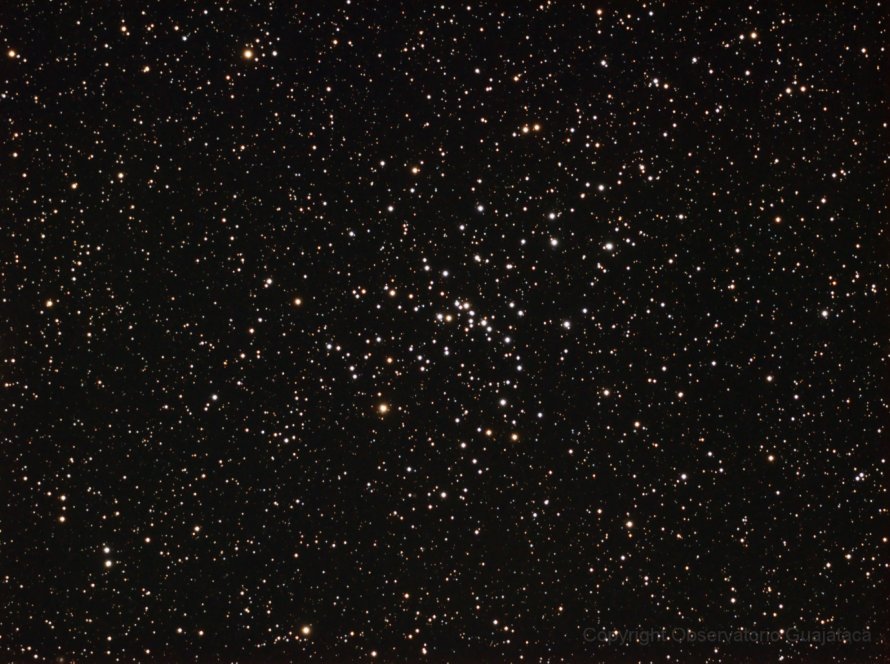M48 (NGC 2548)
Messier 48 (NGC 2548) is an open cluster located in the constellation Hydra, in the Orion Arm of the Milky Way Galaxy in the Local Group of galaxies. M48 is 2500 light years away from Earth.
M48 is best viewed during early spring, is magnitude 5.8, and can be viewed with naked eye (barely). M48 is 30' in apparent size. For reference, the full moon is 30'.
Observing difficulty: Intermediate
- Name:
- Type:
- open cluster
- Constellation:
- Hydra
- NGC or IC:
- NGC 2548
- Magnitude:
- 5.8
- Viewing:
- naked eye (barely)
- Size:
- 30'
- Distance (light years):
- 2500 LY
- RA:
- 8h 13.8m
- Dec:
- -5 48'
- Season:
- early spring
- Milky Way location:
- Orion Arm
- Galaxy group:
- Local Group
- Messier Marathon #:
- 26
* The naked eye can see up to magnitude ~7-8 objects under ideal dark sky conditions.
An Excursion into an Open Star Cluster
Messier 48 (M48), located in the constellation Hydra, is an open star cluster that presents an intriguing and beautiful sight to behold. This article delves into the characteristics of M48, its historical context, and the ease of locating and viewing this celestial wonder.
Historical Overview
M48 was first cataloged by the French astronomer Charles Messier in 1771. Interestingly, Messier's position for the cluster was inaccurate, causing some confusion and leading to the cluster being 'lost' for many years. It was only in the 20th century that Oswald Thomas correctly identified M48 with NGC 2548, a cluster observed by John Herschel.
Physical Characteristics and Magnitude
M48 is located approximately 1,500 light-years away from Earth and has a spatial diameter of around 23 light-years. The cluster is believed to be around 300 million years old, making it relatively young in astronomical terms. It contains around 80 stars, many of which are visible in small telescopes or binoculars.
The overall apparent magnitude of M48 is around 5.8, meaning that it is just on the edge of naked-eye visibility under good conditions. However, its stars spread over a relatively large area of the sky, causing the light to be somewhat dispersed, and often necessitating the use of optical aids to observe effectively.
Scientific Significance
M48 offers a fascinating glimpse into the dynamic processes that shape open star clusters. Its age and richness make it an ideal target for studies of stellar evolution and dynamical interactions within star clusters. Furthermore, the variety of stellar types within the cluster provides opportunities for in-depth study of the various pathways of stellar evolution.
Locating and Observing M48
To find M48, one must look in the constellation Hydra. It is best observed in the late winter and spring months from the Northern Hemisphere. It lies around 7 degrees south-southwest of the relatively bright star Gamma Hydrae. Locating it can be a bit tricky due to the lack of other bright stars in the immediate vicinity.
Viewing M48 reveals a large, loose, and somewhat irregularly shaped cloud of stars. With a telescope or binoculars, numerous stars of various colors, predominantly white and blue, can be observed. These stars appear somewhat scattered, providing a stark contrast to the more densely populated globular clusters often observed by amateur astronomers.



